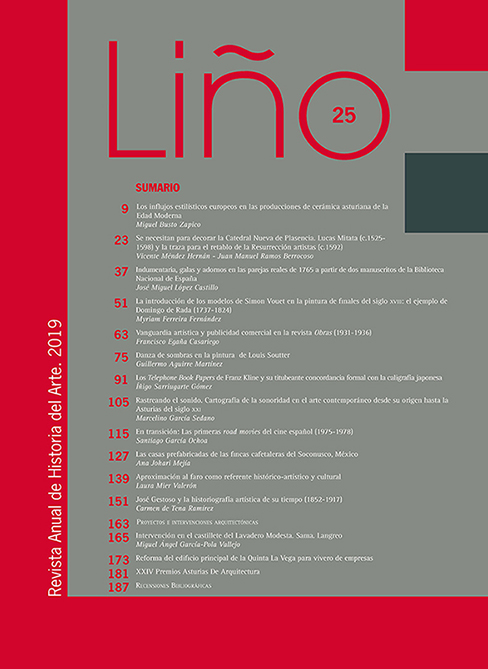Resumen
A través del estudio de 3.237 piezas cerámicas de cronologías que van desde el siglo XIII al XVIII queremos conocer cuáles eran los influjos estilísticos europeos en las producciones de cerámica asturiana. A comienzos de la Edad Moderna los mercados asturianos comienzan a estar inundados por cerámicas de importación, principalmente procedentes de Holanda, Talavera de la Reina, Portugal, Sevilla, País Vasco e Inglaterra. La llegada de estas producciones influirá en las decoraciones desarrolladas en los alfares asturianos de Faro de Limanes y Miranda de Avilés. En esta investigación veremos como en piezas asturianas aparecen motivos creados en Talavera de la Reina, Portugal, Italia, Francia e incluso Holanda. Estas influencias señalan la capacidad de la artesanía del barro asturiana de asimilar novedades, de adaptarse a las nuevas modas decorativas europeas y a las demandas de la sociedad.
The European stylistic influences in the Asturian ceramic productions of the Early Modern Period.
Through the study of 3,237 ceramic pieces of chronologies that go from the XIII to the XVIII century, we want to know what the European stylistic influences in the production of Asturian ceramics were. At the beginning of the Early Modern Period the Asturian markets began to be flooded by imported ceramics mainly from the Netherlands, Talavera de la Reina, Portugal, Seville, the Basque Country and England. The arrival of these productions will influence the decorations developed in the Asturian potteries of Faro de Limanes and Miranda de Avilés. In this investigation we will see how in Asturian pieces, there are motifs created in Talavera de la Reina, Portugal, Italy, France and even Holland. These influences point to the ability of the Asturian mud crafts to assimilate novelties, the means of adaptation to the new European decorative forms and the demands of society.


